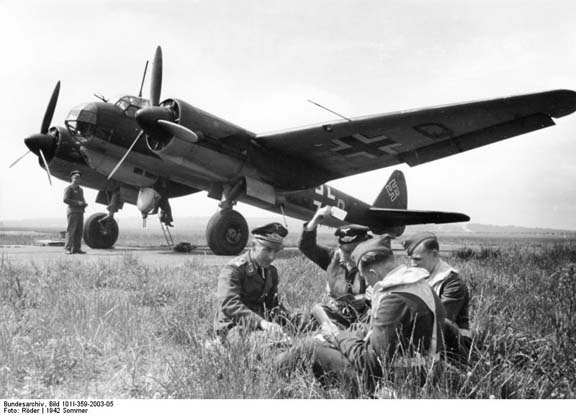LUFTWAFFE RESOURCE CENTER > BOMBERS > JUNKERS JU 88 > PREVIOUS PAGE
Junkers Ju 88

The crew of a Ju 88A variant play cards near there aircraft, summer 1942
[Source: Bundesarchiv]
The Junkers Ju 88 was a World War II German Luftwaffe twin-engine, multi-role aircraft. Designed by Hugo Junkers' company in the mid-1930s, it suffered from a number of technical problems during the later stages of its development and early operational roles, but became one of the most versatile combat aircraft of the war. Affectionately known as "The Maid of all Work" (a feminine version of "jack of all trades"), the Ju 88 proved to be suited to almost any role. Like a number of other Luftwaffe bombers, it was used successfully as a bomber, dive bomber, night fighter, torpedo bomber, reconnaissance aircraft, heavy fighter, and even as a flying bomb during the closing stages of conflict.
Despite its protracted development, the aircraft became one of the Luftwaffe's most important assets. The assembly line ran constantly from 1936 to 1945, and more than 16,000 Ju 88s were built in dozens of variants, more than any other twin-engine German aircraft of the period. Throughout the production, the basic structure of the aircraft remained unchanged, proof of the outstanding quality of the original design.
– DEVELOPMENT
– SPECIFICATIONS
– VARIANTS
– OPERATIONAL HISTORY
– IMAGE GALLERY
– OPERATORS
LUFTWAFFE RESOURCE CENTER > BOMBERS > JUNKERS JU 88 > PREVIOUS PAGE

